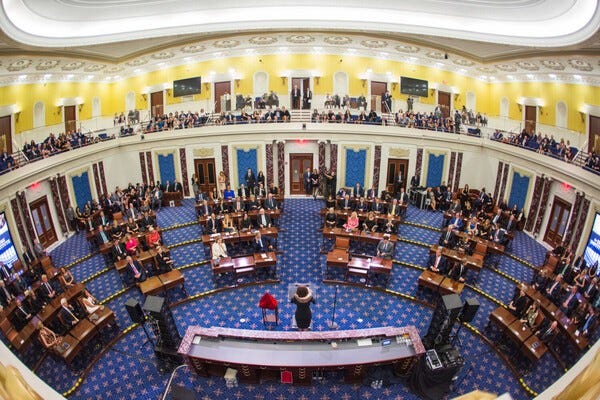The Big Beautiful Bill Will Spike Inequality and Favor the Rich
It also moves the US away from the policies in other major advanced democracies
For years when I regularly taught an undergraduate seminar titled “Democracy and the Politics of Wealth Redistribution” at the University of Chicago, I paired the weightier academic reading with a fun, quick, and thought-provoking piece: “The Secret to Finland’s Success With Schools, Moms, Kids–and Everything”. It points out how on nearly every dimension, Finns are happier, healthier, and better cared for by their societies than Americans. It points to Finland’s generous welfare state – and, by contrast, the patchy and stingy American one – as the root of those differences.
School in Finland is high-quality and either free or very cheap; healthcare is universal; poverty and homelessness are nearly absent; support for families is bountiful; unemployment support is generous. The list goes on. The basic Finnish philosophy is simple: “Everyone should get a slice of the cake so that they have what they need to realize their life projects.”
The Senate’s version of the Big Beautiful Bill works toward the opposite of all of this. It takes an axe to healthcare for the poor by adding work requirements and changing payments for Medicaid; it would push millions back into the ranks of the uninsured; it makes student loan payments more onerous; it cuts food assistance for the needy; and far more. All of that goes to fund tax cuts for the rich (see chart from the NYT).
Even then, it falls trillions of dollars short of the mark and would pile an unprecedented amount onto the debt and to deficits at a time when interest rates are already high. That will heavily constrict social spending in the future. It is a recipe for expanding American inequality that is already on a multi-decade tear. It will drive an ever-larger wedge between how the poor and the rich live.
Of course, it’s not a done deal – yet. The bill has to go back to the House for approval before Trump can sign it. Already there are signs that a number of House Republicans are unhappy with the changes in the Senate – and might hold up the bill for a short while. But make no mistake: the bill will ultimately pass, and in the rough outlines of where it currently stands.
Ten years from now, the bill will have created an even bigger chasm between the welfare and opportunities of Americans and the citizens of other rich, advanced economies like Finland (or, for that matter, Germany, France, Japan, South Korea, etc). When my class read the article on the seeming Finnish utopia, it would provoke some mix of envy, skepticism, disdain, or even pride (among the Europeans and especially when I had a Finn in class) – depending on the student. It invariably prompted discussion, and even more so because Finland hasn’t always been like this. In fact, well into the early 1900s the country was poor and heavily agrarian and life spans were short.
A combination of war involvement, social mobilization, and an inclusive electoral system that could empower workers and unions ultimately gave rise to Finland’s generous – and fabulously successful – welfare state. It has never seriously strayed from that formula ever since. The US never had the same confluence of historical factors, and in addition, it’s far larger, more diverse, and more individualistic than Finland is.
Equally important is the winner-take-all electoral system and the country’s two dominant political parties. The Big Beautiful Bill is going to pass by a vanishingly small amount, delivering immense gains to a tiny fraction of society. All of that is on the back of a tranche of Republicans that views healthcare, jobs, and dignity not as something that the government owes people, but rather as something that should be earned. Money in politics is also at play. Research shows a strong link between what rich voters want and what their representatives vote for (as well as policy outcomes). At the same time, there is a depressing lack of an association between what the poor want and what their representatives support.
Since the time of the Great Depression, the US has slowly, and in fits and starts, cobbled together a massive social safety net that has benefitted hundreds of millions of people. The Big Beautiful Bill puts that at risk and could come back to haunt Republicans. After all, Trump has boosted support among low-income voters, millions of whom will be slammed by this policy. But by then, it is going to be hard to reverse much of it. And in the meantime, any illusions of drawing the social safety net closer to Finland’s – rich though the US may be – will have slipped away.
The leading image is of a Senate session with procedural voting for the Big Beautiful Bill. The source of the chart for the Senate bill above is: https://www.nytimes.com/interactive/2025/06/30/upshot/senate-republican-megabill.html






Thank you for writing this. Please update again soon on this comparative-historical sketch, as the bill becomes law.